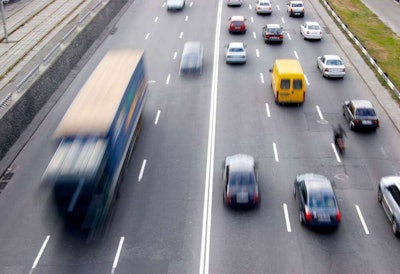
President Obama has announced a comprehensive infrastructure plan to expand and renew the nation’s roads, railways and runways. The proposal is among a set of targeted initiatives Obama discussed briefly Monday, Sept. 6, at a Labor Day speech and was set to outline further in Cleveland Wednesday, Sept. 8, to support the nation’s economic recovery and facilitate long-term sustainable growth. The plan is intended to build upon the infrastructure investments already made through the Recovery Act
The “Renewing and Expanding America’s Roads, Railways and Runways” plan is intended to combine a long-term vision for the future with new investments. The plan would front-load a significant portion of the new investments in the first year to jump-start the economy and boost employment, and would stress reform in the way America currently invests in transportation, focusing on enhancing competition, innovation, performance and real analysis, while moving away from earmarks and formulas.
Over the next six years, the plan would include rebuilding 150,000 miles of roads, constructing and maintaining 4,000 miles of rail coast-to-coast and rehabilitating or reconstructing 150 miles of runway while putting in place a NextGen system designed to reduce air travel time and delays. Obama proposes to pair these short-term projects with a long-term framework to reform and expand the nation’s investment in transportation infrastructure.
Since the end of last year, when the last long-term surface transportation legislation expired, these investments have been continued on a temporary basis, even as the trust fund to finance them has fallen into insolvency. The long-term framework includes these proposed reforms:
• Infrastructure Bank. Obama proposes to fund a permanent infrastructure bank that would leverage private, state and local capital to invest in projects that are most critical to economic progress, a departure from spending on infrastructure through earmarks and formula-based grants that are allocated more by geography and politics than demonstrated value. Instead, the bank would base its investment decisions on clear analytical measures of performance, competing projects against each other to determine which would produce the greatest return for American taxpayers;
• A transportation program to ensure a sustained and effective commitment to a national high speed rail system over the next generation;
• Streamlining, modernizing and prioritizing surface transportation investments, consolidating more than 100 different programs and focusing on using performance measurement and “race-to-the-top”-style competitive pressures to drive investment toward better policy outcomes; and
• Expanding investments in areas like safety, environmental sustainability, economic competitiveness, and livability – helping to build communities where people have choices about how to travel, including options that reduce oil consumption, lower greenhouse gas emissions and expand access to job opportunities and affordable housing.











